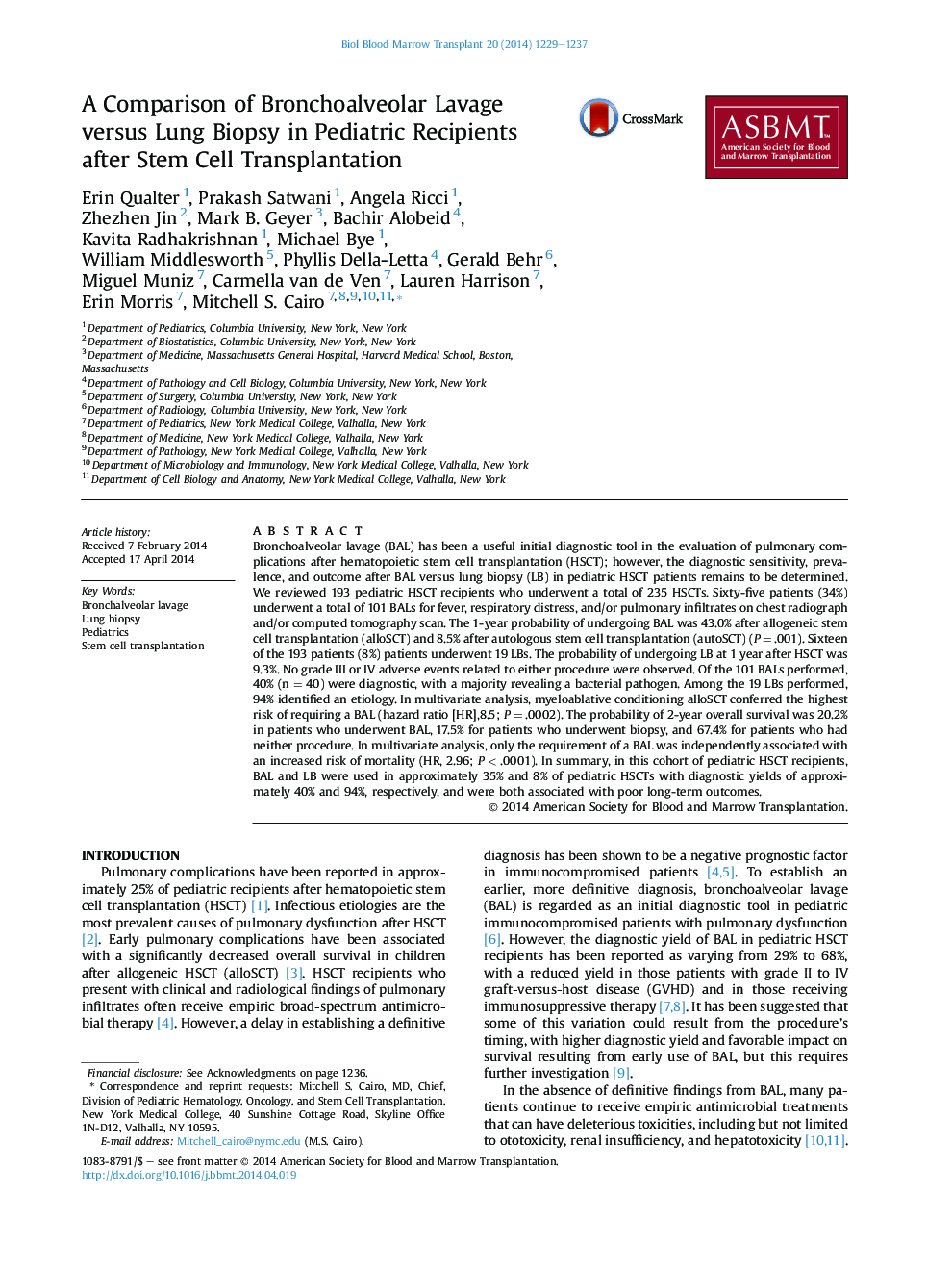| کد مقاله | کد نشریه | سال انتشار | مقاله انگلیسی | نسخه تمام متن |
|---|---|---|---|---|
| 2102058 | 1546277 | 2014 | 9 صفحه PDF | دانلود رایگان |
Bronchoalveolar lavage (BAL) has been a useful initial diagnostic tool in the evaluation of pulmonary complications after hematopoietic stem cell transplantation (HSCT); however, the diagnostic sensitivity, prevalence, and outcome after BAL versus lung biopsy (LB) in pediatric HSCT patients remains to be determined. We reviewed 193 pediatric HSCT recipients who underwent a total of 235 HSCTs. Sixty-five patients (34%) underwent a total of 101 BALs for fever, respiratory distress, and/or pulmonary infiltrates on chest radiograph and/or computed tomography scan. The 1-year probability of undergoing BAL was 43.0% after allogeneic stem cell transplantation (alloSCT) and 8.5% after autologous stem cell transplantation (autoSCT) (P = .001). Sixteen of the 193 patients (8%) patients underwent 19 LBs. The probability of undergoing LB at 1 year after HSCT was 9.3%. No grade III or IV adverse events related to either procedure were observed. Of the 101 BALs performed, 40% (n = 40) were diagnostic, with a majority revealing a bacterial pathogen. Among the 19 LBs performed, 94% identified an etiology. In multivariate analysis, myeloablative conditioning alloSCT conferred the highest risk of requiring a BAL (hazard ratio [HR],8.5; P = .0002). The probability of 2-year overall survival was 20.2% in patients who underwent BAL, 17.5% for patients who underwent biopsy, and 67.4% for patients who had neither procedure. In multivariate analysis, only the requirement of a BAL was independently associated with an increased risk of mortality (HR, 2.96; P < .0001). In summary, in this cohort of pediatric HSCT recipients, BAL and LB were used in approximately 35% and 8% of pediatric HSCTs with diagnostic yields of approximately 40% and 94%, respectively, and were both associated with poor long-term outcomes.
Journal: - Volume 20, Issue 8, August 2014, Pages 1229–1237
